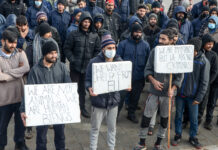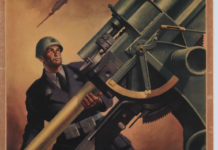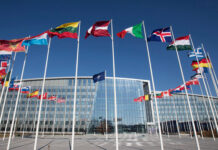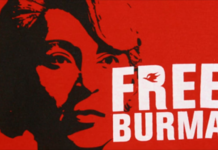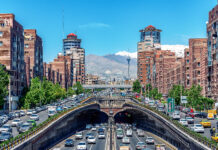Latest developments
In November 2023, Tuareg rebels took control of a base in the northern city of Kidal, left unguarded by United Nations Peace forces. The UN mission Minusma explained that it quickly left the city after suffering two attacks on the road to Goa. The Tuareg claimed victory on social media. Kidal is the stronghold of the separatist uprising that has been crossing Mali for years, with the Tuareg demanding independence from Bamako. For its part, the UN mission began demobilizing after the military government in power in October 2023 removed it from the country’s bases, stating that “the decade-long mission against Islamist militants has failed”: a harsh statement that paved the way for an alliance between the military government and the paramilitary organization Wagner.
The mission was actually supposed to demobilize in December 2023. The early timing led to a resumption of fighting between the regular army, separatists, and extremely active Islamist extremist groups in the area. Human Rights Watch has published a report denouncing that jihadists affiliated with al-Qaeda and some mercenaries from the Wagner group have killed at least 175 civilians, including many children, in 5 operations between April and September 2023. The country’s situation remains difficult, practically a perpetual war between factions. The various armed actors fighting for control of the territory in the North of the country (Azawad) have tried to take advantage of the evacuation of Minusma camps, and even the army has rushed to take control.
The separatist groups, predominantly Tuareg who oppose the national army, have resumed hostilities against government forces, as well as the Gsim (Group for Support of Islam and Muslims), affiliated with al-Qaeda. The Government seeks solutions. In September 2023, Mali, Burkina Faso, and Niger signed a mutual defense pact. With this “Sahel States Alliance,” the three countries aim to help each other against possible threats of armed rebellion or external aggression. At the same time, Bamako has turned to Wagner, the armed arm of Russian penetration in Africa. It seems that the presence of Russian mercenaries costs the Government $10 million a month. An important figure, which militarily, however, is not bringing the desired results in the fight against separatists and extremists. While the brutal methods used by Russian contractors are increasing discontent among the population.
What are they fighting for?
The control of regional drug trafficking routes (especially South American cocaine and opiates transiting from Asia to European markets), arms, and human trafficking (migrants) is one of the strategic objectives of jihadist groups. Concurrently, the seizure of substantial wealth in Mali (especially in mineral resources such as oil, uranium, gold, and natural gas) is behind the increasing militarization of the country and the entire central Sahel region, which also includes Niger and Burkina Faso. Mali, like the entire region, is at the center of the global geopolitical chessboard. Additionally, there is control over natural resources (especially water and cultivable land), which are increasingly scarce due to worsening effects of climate change (primarily desertification). Access to natural resources is the cause of conflicts between semi-nomadic Fulani herders and sedentary Bambara and Dogon farmers. In ancient times, these disputes were resolved by traditional leaders who have now lost legitimacy among the populations of the central-northern regions of the country. This power vacuum, exacerbated by the chronic absence of the central state in peripheral areas, is filled and exploited by neo-jihadist groups, warlords, drug traffickers, and ethnic militia groups that proliferate in the country, hindering peace negotiations with Tuareg armed groups initiated with the signing of the Algiers Agreement in 2015.
Country overview
The history of independent Mali begins in 1960, with the end of French rule. The country is the 24th largest in the world by land area. It is largely a desert territory, inhabited by various ethnic groups, mostly Muslims. The majority of the population lives in rural areas, below the poverty line. Illiteracy exceeds 65%. The serious social situation mirrors the economic one. Foreign debt approaches $5 billion. The country has large untapped mineral deposits. Other mineral resources include gold, phosphates, uranium, oil, and natural gas. In this context, the conflict that has engulfed Mali since 2012 develops. Following the death of Muammar Gaddafi, a large group of Malian Tuareg soldiers returned from Libya to their homeland with Libyan weapons and a renewed irredentist sentiment towards Bamako. After unilaterally declaring the independence of Azawad (a region in the north of the country) in April 2012, the National Movement for the Liberation of Azawad forged alliances with drug traffickers and jihadists from Algeria and Mauritania. This was followed by 9 months of occupation of the northern part of the country, interrupted by the French-Chadian intervention in early 2013 in support of Malian troops. However, the deployment of French soldiers from Operation Barkhane and over 13,000 UN peacekeepers from the United Nations Multidimensional Integrated Stabilization Mission in Mali (MINUSMA) did not bring about peace. The jihadist presence expanded to reach central Mali. Malian neo-jihadism is also fueled by the increasingly worrying export of Wahhabism and neo-Salafism from Saudi Arabia and Qatar. These powers, along with China, India, and South Africa, seek to seize the resources of fragile states that, facing rampant insecurity and chronic economic crises, seek new military and commercial partners to distance themselves from their old colonial masters. Indeed, anti-French sentiment has steadily grown in Mali. Russia and Turkey have also taken advantage of the situation, becoming new competitors to Paris interested in the lucrative prospects of supplying arms in the war against Islamic terrorism. The local population, caught between militarization and terrorism, seeks refuge behind the protection of mercenary groups and ethnic militia groups of self-defense that are blood shedding the central-northern part of the country.
Here, the humanitarian situation has severely deteriorated, with thousands of internally displaced persons. An unintended consequence of the situation has been two military coups in less than 9 months. The first in August 2020, when then-President Keita was ousted. The second in May 2021, when the junta led by Colonel Assimi Goïta intervened after an attempted government reshuffle to rebalance civilian powers from the National Transitional Council, which is supposed to guide the country towards free elections. The council is now under military control. Several politicians, activists, and citizens opposed to the authoritarian turn of the junta have been imprisoned. The international community, the African Union, the Economic Community of West African States, France, and the United States have condemned the coup and threatened sanctions. Paris and Washington have suspended military cooperation with the country. Meanwhile, two weeks before the coup, the EU had preemptively frozen funding direct to Mali’s state budget. A general strike, initiated by public officials demanding months of overdue salaries, then erupted in Bamako. All in vain. And military repression has not been enough to control the country, which is also grappling with the aftermath of the Covid-19 pandemic. Jihadism is increasingly active in the border area between Mali, Burkina Faso, and Niger. The central and northern regions continue to elude Bamako, confirming themselves as strongholds of groups linked to the Group for the Support of Islam and Muslims (the Malian branch of al-Qaeda) and to the Islamic State in the Greater Sahara. Other armed groups continue to proliferate, subjecting the population of the central-northern regions to daily violence and abuses. These have been perpetrated since 2013 on civilians by the national army, as denounced by international organizations. To complete the picture, the end of Paris’ military missions and Bamako’s exit from the G5.
Key figure or organization – Amadou Hampâté Bâ
He was a Malian writer, philosopher, and anthropologist. From a noble Fulbe family, after the death of his father, he was adopted by his mother’s second husband and initiated into the knowledge and practices of his people. He attended the Quranic school of Tierno Bokar, a member of the Tijaniyya brotherhood. Later, he held various roles within the French colonial administration. In 1960, with Mali’s independence, he founded the Institute of Human Sciences in Bamako and represented his country at the general conference of UNESCO, where he was appointed an executive member in 1962. In 1966, he participated in the development of a unified system for transcribing African languages. From 1970 onwards, he devoted himself entirely to the preservation of the oral heritage of West Africa. He wrote two autobiographical novels: “Amkoul, the Fulbe Boy” and “Yes, Commander.”
FOCUS 1 – Street Poetry for Women
Aicha Diarra is 23 years old, born and raised in Mali, and is an activist. She has risen to prominence in one of the countries with the most turbulent and dramatic recent history in Africa. She has become a celebrity for her commitment to defending women’s rights. She has found an original way to fight for gender equality: street poetry, or slam poetry. How does it work? Through poetry competitions performed on the streets of Bamako, the capital of Mali, Aicha has denounced violations of women’s rights, addressing issues considered controversial or outright taboo. She herself has explained how she came to this form of activism and protest: “I took a slam poetry course at school, when I was in high school, and from that moment I decided to practice and dedicate myself to this art, which has allowed me to take the stage in my country and denounce the injustices to which Malian women are subjected.”
FOCUS 2 – Nuclear power for Africa
Burkina Faso and Mali have signed two memoranda of understanding with Rosatom, the Russian atomic energy agency. The goal is to build nuclear power plants in the two African countries. This was reported by the Burkinabé website Le Faso. The beginning of this cooperation was announced at the Russian Energy Week held in Moscow from October 11th to 13th, 2023. The development of nuclear power for civilian purposes is one of the cards played by the Kremlin to extend its influence on the continent. Currently, the only African nuclear power plant is operational in South Africa since 1984.



